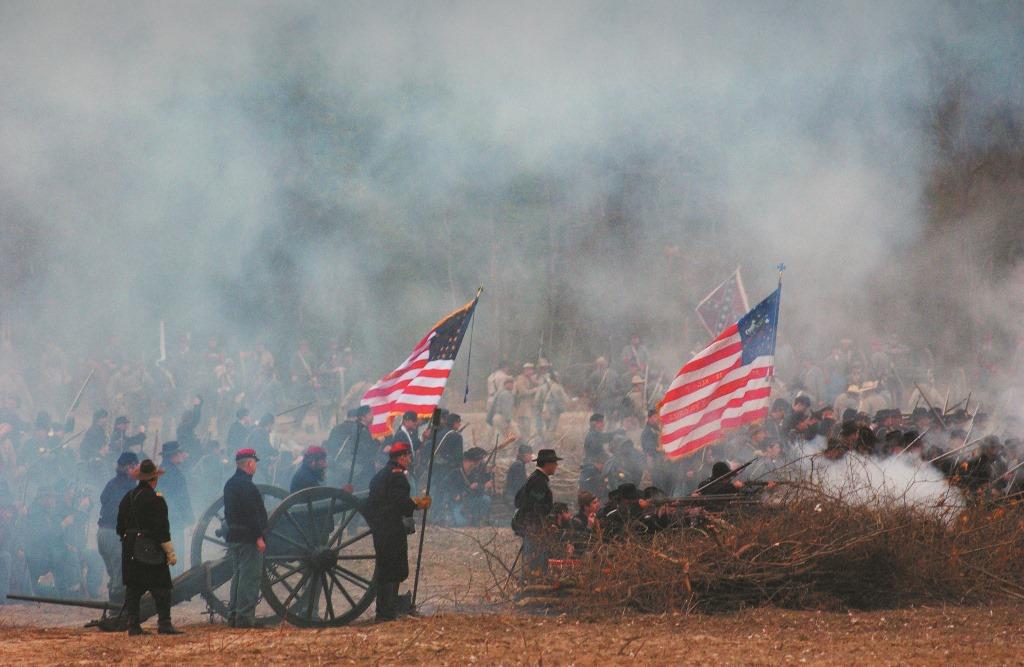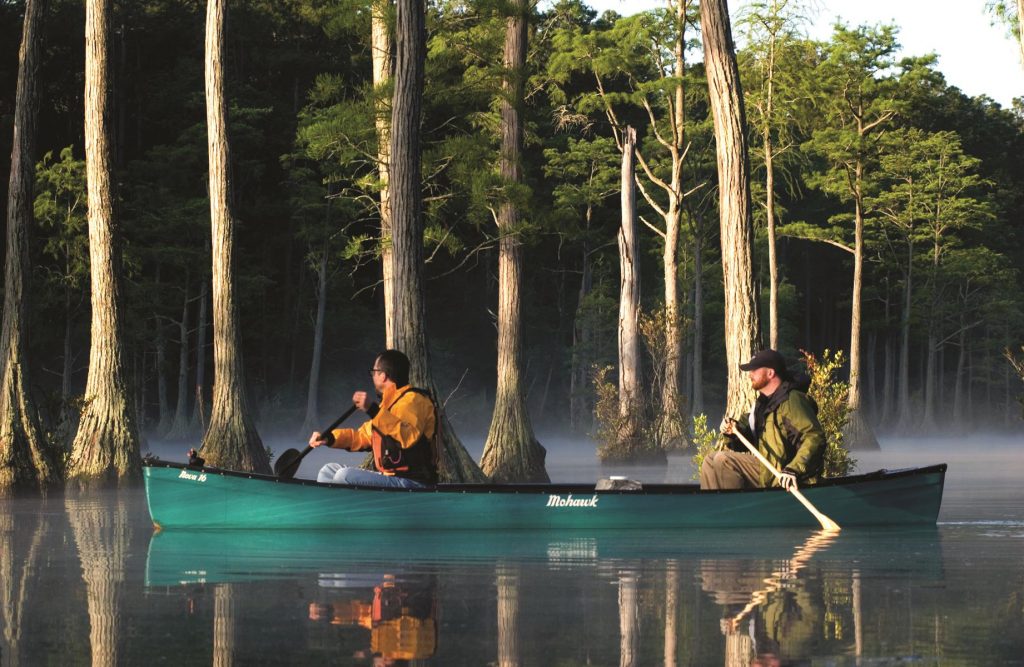1. Scenic Beauty at Every Turn
North Carolina has a well-deserved reputation for diverse and breathtaking scenery. It stretches from the Blue Ridge Mountains to the fruitful Piedmont to the shores of the Atlantic. Travelers to North Carolina should take the more leisurely highways and enjoy the state’s natural character.
There are more than 50 North Carolina Scenic Byway routes and two All American Roads/National Scenic Byways within the state’s boundaries. These alternatives to faster-paced traffic avoid commercial areas. The routes vary in length from three to 170 miles. From curvy mountain roads to ferry rides, your North Carolina visit will be filled with scenic beauty. Download the Scenic Byways Book at ncdot.gov/travel/scenic.
2. Beacons in the Night
Long ago lighthouses along the coast protected seamen, giving them direction and a sense of security and safety. Today, seven lighthouses invite visitors to learn their history and climb to the top for wonderful views.
The Currituck Beach Light House in Corolla, opened in 1875, was constructed of red bricks. The Bodie Lighthouse overlooks Oregon Inlet near southern Nags Head. The Cape Hatteras Lighthouse opened in 1870, but the location has a rich history dating back to 1803. You’ll need to take a free ferry from Hatteras to Ocracoke Island to visit North Carolina’s oldest operating lighthouse, Ocracoke Lighthouse. The Oak Island Lighthouse in Brunswick County requires a two-week advance notice to climb its 134-steps. Old Baldy on Bald Head Island, accessible by ferry, has a history dating back 140 years.
3. The Lady was a Warrior
The Battleship USS North Carolina was brought to Wilmington in 1961 as an authentically restored National Historic Landmark. Commissioned in 1941, she became the first of 10 fast battleships added to the World War II fleet. Her history of duty is inspiring.
From early August 1942 through mid-August 1945 the Battleship USS North Carolina participated in every major Pacific naval offensive, earning 15 battle stars. The Luzon Operation, Iwo Jima Operation and Okinawa Operation are just a few that have a significant place in our history. She carried out nine shore bombardments, sank an enemy merchant ship and destroyed 24 enemy aircraft while protecting American aircraft carriers and rescuing numerous downed airmen.
4. Marvelous Museums
In Raleigh the North Carolina Museum of Art features superb exhibits inside and out. The Mint Museum Uptown and Bechtler Museum of Modern Art are there to discover in Charlotte’s artistic stroll district. The Harvey B. Gant Center for African-American Arts + Culture is close-by. Wilmington’s Cameron Art Museum features fine art collections and a Civil War site on its campus.
The International Civil Rights Center & Museum in Greensboro houses the Woolworth’s lunch counter display where the sit-in movement began. In the Great Smoky Mountains the Museum of the Cherokee Indian and Oconaluftee Indian Village tell the history of the Eastern Band of the Cherokee Nation. The Airborne & Special Operations Museum in Fayetteville honors the troops that have contributed so much to our nation’s military history.
5. That’s Racin’
What began as racing between North Carolina bootleg moonshine runners developed into the most watched sport. The Charlotte area is the hub for much of the racing world action. The NASCAR Hall of Fame celebrates the history of motorsports and honors its champions. For 50 years the Charlotte Motor Speedway has been entertaining fans of all ages.
The RCR Racing Museum in Lexington features more than 25 No. 3 Goodwrench Chevrolets driven by Dale Earnhardt, Sr. In nearby Randleman visitors explore the Petty Enterprises Historic Site with an inside look at Petty’s Garage and The Petty Museum.
6. Rails and Rafting
Great Smoky Mountains Railroad in Bryson City is one of the top fun things to do in North Carolina. A Raft and Rail combination is available on the Nantahala Gorge excursion. The train takes you to the Nantahala Outdoor Center, an hour from Asheville, to experience three levels of whitewater rafting. The center’s newest addition is a 550-foot zip line going as high as 60 feet above the forest floor.






